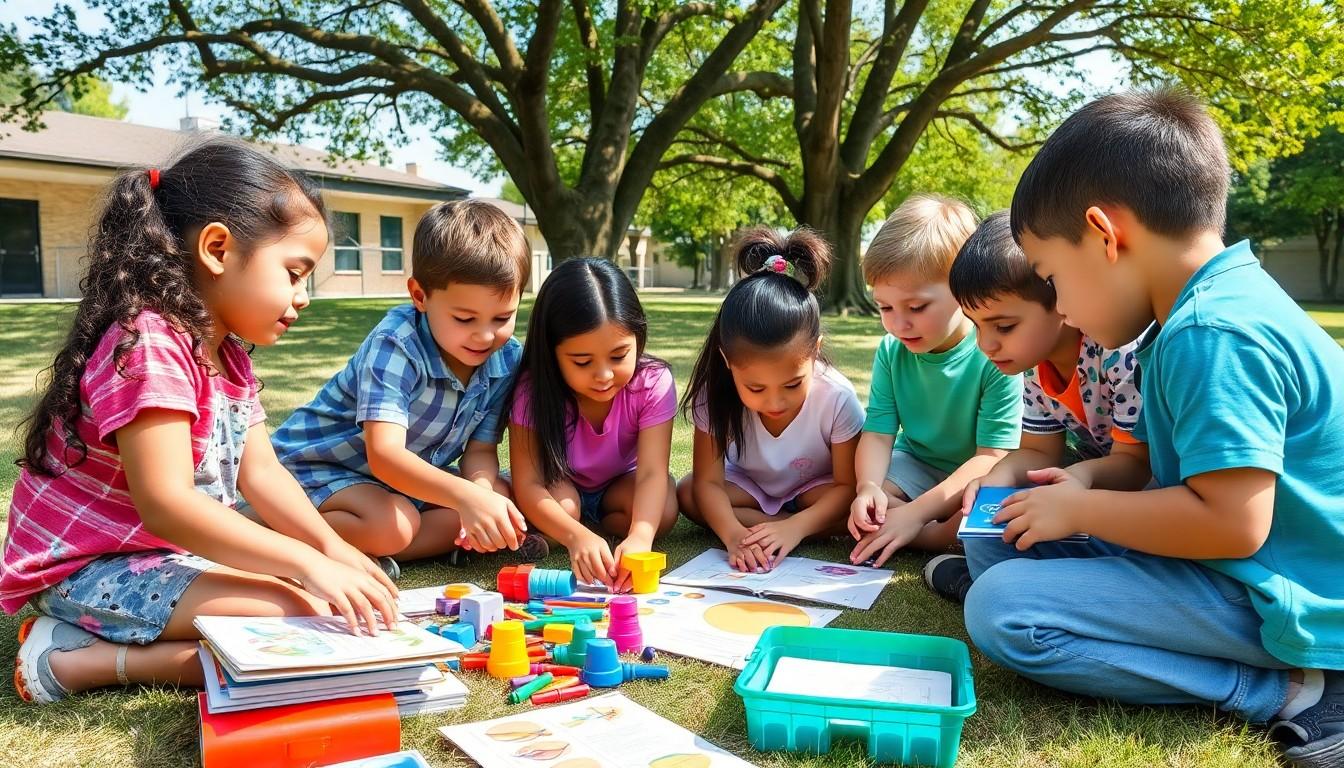Table of Contents
ToggleSearching for the perfect elementary school can feel like trying to find a needle in a haystack, especially when the traditional options just don’t cut it. If you’re on the hunt for something a little more unique, alternative elementary schools might just be your golden ticket. These schools offer innovative approaches that spark creativity and foster a love for learning, all while keeping the fun factor high.
What Are Alternative Elementary Schools?
Alternative elementary schools offer varied educational approaches that diverge from traditional methods. These schools emphasize individualized learning experiences, catering to each student’s unique needs and interests. Curriculum flexibility allows for creative teaching methods, including hands-on learning, project-based assignments, and interdisciplinary studies.
Teaching philosophies in alternative schools often prioritize students’ emotional and social development. Many programs incorporate elements from educational theories such as Montessori, Waldorf, or Reggio Emilia, which focus on child-led exploration and community involvement. Such environments foster collaboration, critical thinking, and problem-solving skills.
Additionally, alternative elementary schools frequently foster a strong sense of community. Parents, teachers, and students often engage in cooperative activities, creating supportive networks that extend beyond the classroom. School culture tends to encourage open communication, allowing families to partake in decision-making processes.
Assessments within these schools typically differ from conventional testing methods. Instead of standardized tests, alternative schools may utilize portfolios, presentations, or narrative evaluations to gauge student progress. Such approaches provide a more comprehensive view of a child’s learning journey.
Ultimately, alternative elementary schools present a distinctive choice for families seeking educational options that emphasize creativity, holistic development, and community engagement. They cater to children who thrive in supportive, nurturing environments and offer innovative practices that inspire lifelong learning.
Benefits of Alternative Elementary Schools
Alternative elementary schools provide unique advantages that draw interest from many families. These institutions prioritize creative learning and emotional development, appealing to students with different needs.
Holistic Education Approaches
Holistic education approaches focus on the entire child. They stimulate cognitive, emotional, and social growth through diverse teaching methods. Schools may incorporate project-based learning, emphasizing real-world problem-solving alongside core academic subjects. Curriculum design often reflects students’ interests, promoting deeper engagement. Teachers encourage self-directed exploration, helping children develop critical thinking skills. Social and emotional learning components enhance personal growth. Parents frequently notice increased confidence and resilience in their children, as assessments highlight a child’s overall development rather than just academic scores.
Diverse Learning Environments
Diverse learning environments thrive on variety and inclusion. Alternative schools create settings that adapt to students’ unique learning styles. Class sizes tend to be smaller, allowing for personalized attention and support. These schools often offer flexible schedules that accommodate different rhythms and preferences. Learning may occur inside and outside traditional classrooms, utilizing nature and community resources. Interaction among various age groups promotes collaborative learning experiences. Parents appreciate the focus on interpersonal skills, preparing children for real-world interactions. Overall, the supportive atmosphere fosters a love for learning, enabling children to flourish academically and personally.
How to Find Alternative Elementary Schools Near Me
Finding alternative elementary schools requires a targeted approach. Exploring local educational options, assessing schools firsthand, and gathering insights empower families to make informed choices.
Researching Local Options
Start by using online resources to locate alternative elementary schools nearby. Websites like GreatSchools and Niche provide ratings and reviews, helping parents compare schools. Local forums and community groups also offer valuable insights from other families. Identifying specific educational philosophies is essential, as schools may follow Montessori, Waldorf, or Reggio Emilia approaches. Once narrow options surface, consider visiting school websites for detailed information on curricula, teaching philosophies, and enrollment procedures.
Visiting Schools for Assessment
Schedule tours to gain firsthand experience of selected schools. Observing classrooms in action reveals teaching styles and student interactions. Engage with teachers to ask about their approach to individualized learning and social development. Consider the school environment and the sense of community felt during the visit. Attending open houses or informational sessions allows for additional questions and clarifies the school’s mission. Encourage children to attend these visits, as their feelings about the environment play a crucial role in overall satisfaction.
Comparing Alternative Schools to Traditional Schools
Alternative schools differ significantly from traditional schools in several key aspects. These institutions emphasize personalized learning, tailoring educational experiences to individual student interests. Project-based learning and hands-on activities frequently replace rote memorization and standardized testing, fostering deeper engagement.
Class sizes often remain smaller in alternative settings, promoting individualized attention from educators. This structure allows teachers to identify and nurture each child’s unique strengths. Emotional and social development receives as much focus as academic success, which contrasts with traditional schools that typically emphasize test scores and grades.
Curriculum flexibility allows educators to integrate various teaching methods based on student needs. For example, alternative schools often incorporate elements from Montessori or Waldorf methodologies, emphasizing creativity and exploration over hierarchical teaching models. Assessment practices diverge from conventional methods, utilizing portfolios and presentations instead of standardized tests to evaluate student progress comprehensively.
Community involvement plays a crucial role in alternative schools, creating a supportive atmosphere among teachers, parents, and students. Decision-making processes are inclusive, encouraging parental engagement and collaboration in the educational journey. Traditional schools may lack this level of community engagement, often operating within more rigid structures.
Ultimately, families may find that alternative schools provide an environment better suited for holistic education. These institutions stimulate cognitive, emotional, and social growth, catering to diverse learning styles. To many, the benefits of alternative elementary schools offer a compelling option for fostering a lifelong love of learning in their children.
Conclusion
Exploring alternative elementary schools can open doors to innovative learning experiences that prioritize creativity and emotional growth. These schools cater to diverse learning styles and foster a supportive community, making them ideal for children who thrive in nurturing environments.
By emphasizing individualized attention and flexible curricula, alternative schools prepare students for real-world challenges while inspiring a lifelong love of learning. Families seeking a more holistic approach to education should consider visiting local options to find the best fit for their child’s unique needs. Engaging with the school community can further enhance the decision-making process, ensuring a positive educational journey for every child.





